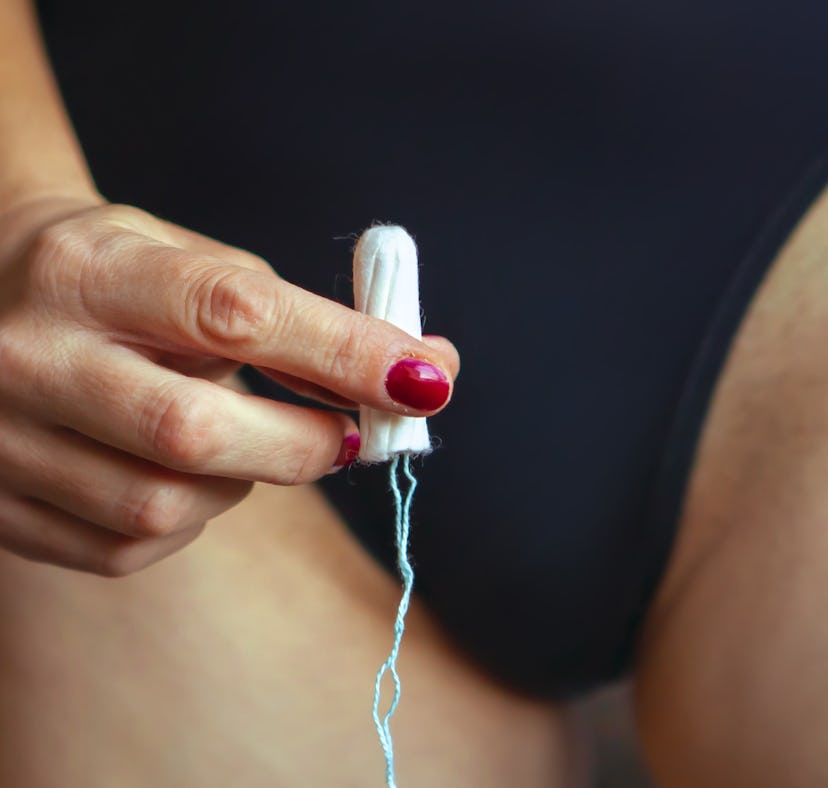
4 Facts For Anyone Who’s Ever Wondered About The Safety Of Tampons
It’s time to set the record straight.
If you menstruate, it’s totally normal if you find yourself wondering, “Are tampons safe to use?” But let’s start here: It's possible that some of what you've heard isn't totally accurate, and you can rest assured tampons are regulated by the U.S. Food and Drug Administration (FDA) and must follow standardized and rigorous testing to be considered safe for use when used as intended. *Blows sigh of relief*.
Even so, there’s probably still a slew of questions rushing through your mind, especially if you’re new to using tampons. With that, below are four common tampon-related questions and the facts you need to know.
1. Are tampons safe to use?
Yes (when used as directed, of course). When thinking about tampon safety, it’s common to automatically think of Toxic Shock Syndrome (TSS), a full-body systemic bacterial infection caused by a specific strain of Staphylococcus aureus bacteria. Even though TSS is associated with tampon use, you can also get it while using pads or menstrual cups. And it’s not just something women can develop — in fact, anyone can get TSS, including men and children.
Though serious, TSS is rare and treatable (you’re more likely to die from being struck by lightning). If you’re concerned about TSS, watch for flu-like symptoms like a high fever over 102° F, body or joint aches, nausea and/or vomiting, diarrhea, dizziness or fainting or confusion, and sometimes a red rash. If you’re using a tampon and notice some of these symptoms, remove it right away, seek immediate medical attention, and tell your healthcare provider you’re concerned about Toxic Shock Syndrome. Aside from knowing the symptoms, reduce your risk even more by changing your tampon every four to eight hours, using the lowest absorbency to manage your flow, and using pads occasionally to interrupt tampon use.
2. Are organic tampons a better option?
Ready for a fireball of truth? There is no scientific evidence that organic tampons are any safer than conventional tampons. Organic tampons are made with — you guessed it — organic cotton, while conventional ones are usually made with rayon, conventional cotton, or a blend of the two. (And in case you’re wondering, yes, it’s possible to get TSS while using an organic tampon.)
So, which do you use then? Whatever aligns with your lifestyle! If living an organic lifestyle is important to you, then by all means, go for it. If you decide to stick with conventional tampons, don’t feel anxious or guilty that you’re doing the “wrong” thing, as the safety profile of both types of tampons is no different.
3. Can tampons get… lost?
Anyone who has ever used a tampon (or, heck, even a menstrual cup) has asked this question at least once. Fear not! A tampon cannot — as in zero chance — get lost in your body. Think of your cervix, the barrier between your vagina and uterus, as a “dead end” because the only thing that can get above your cervix is liquid or something microscopic in size. However, a tampon can get squished sideways or high up in your vagina, making it hard to reach but it won’t ever actually get stuck.
To remove it, wash your hands, squat down, put your finger in your vagina, and sweep it in a circle until you feel the tampon, then grasp it with two fingers to pull it out. For tampons that are farther up, simply squat and bear down (like you’re pooping) to bring it closer to the vaginal opening. If you’re creeping up on the eight-hour mark and still can’t get the tampon out, seek help from an OB-GYN or family doctor as soon as possible.
4. Will it hurt to put in a tampon?
If it’s your first time ever putting a tampon in, it can take a bit of getting used to. You’ll want to start by picking the right absorbency (tampon sizes are based on this, with light being the smallest) for your flow. Most folks use a regular absorbency but if you aren’t sure, start with the light and go up in size if you find it leaks after a few hours.
To put in a tampon, start by washing your hands and removing it from the wrapper. Place the tip of the tampon at your vaginal opening, aim toward your lower back, and slowly insert the tampon applicator from the tip to the smaller grip area. Then, use your pointer finger to push the plunger all the way and release the tampon, and pull the applicator out. The string will be the only thing left sticking out of your vagina. Tip: If it feels uncomfortable or makes you walk weird, it’s probably because it isn’t in far enough, so just use your finger to push it farther in. Voilà!
And there you have it, folks! There’s no reason to be worried about the safety of tampons, especially when using a trusted brand like Tampax. With five different tampon options, Tampax offers comfort and reliability for everyone. Not to mention, it's the #1 tampon brand recommended by U.S. OB-GYNs. Period, end of story (sorry, had to).
*Based on a 2025 survey
This article was originally published on